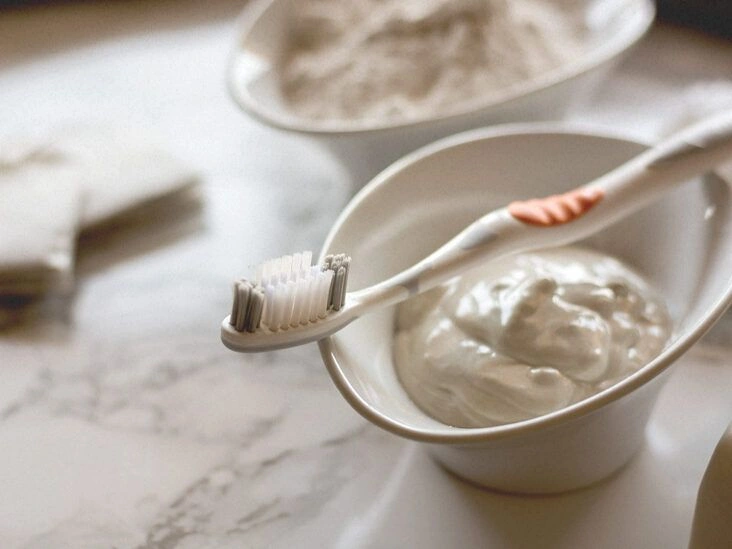Any tooth abscess requires professional dental care, but certain at-home measures — like a saltwater rinse or a cold pack — can ease the pain and discomfort while you await treatment.
An abscessed tooth develops when bacteria invade the inner portion of a tooth. This often happens when a tooth is cracked, chipped, or extensively decayed, allowing microbes to reach the tooth’s core.
Once bacteria infect the tooth’s pulp, pus builds up and creates pressure, which is experienced as a toothache.
Without treatment, the infection can spread to surrounding gum tissue and the jawbone.
Although dental intervention is essential, some home remedies can help manage symptoms alongside prescribed therapies.
Below are several home approaches that may be used in conjunction with professional care.

1. Saltwater rinse
Gargling with saltwater is an inexpensive, straightforward method to temporarily soothe an abscessed tooth. It supports wound repair and helps keep gums healthier.
How to do it:
- Combine 1/2 teaspoon of regular table salt with 1/2 cup of warm tap water.
- Swish the saline around your mouth, aiming to keep it moving for at least two minutes.
- Spit the liquid out when finished.
Repeat as often as three times daily.
Read more about using a saltwater gargle.
2. Baking soda
Baking soda is another low-cost household remedy for various oral issues and may help control symptoms of an abscessed tooth. You might already have it in your pantry.
Baking soda is useful for breaking down plaque and possesses some antibacterial action.
How to do it:
- Mix 1/2 teaspoon of baking soda with 1/2 cup of water and a pinch of salt.
- Swish the solution around your mouth for up to five minutes.
- Spit it out and continue until the mixture is finished.
Use this up to twice per day.
Want to know more ways baking soda can be used?
3. Oregano essential oil
Oregano oil is an essential oil with anti-inflammatory, antimicrobial, and antioxidant effects. It may help decrease swelling and ease the pain of an abscessed tooth. Always dilute essential oils with a carrier oil to reduce the chance of irritation.
How to do it:
- Add several drops of oregano essential oil to 1 ounce of a carrier oil.
- Place a few drops of the diluted mixture on a cotton ball or swab.
- Hold the cotton on the infected spot for two to three minutes.
- Remove it, let the oil remain for at least 10 minutes, then rinse.
Repeat up to three times daily.
Learn how to pick a suitable carrier oil.
4. Cold compress
An ice pack helps numb pain and reduce facial swelling.
How to do it:
- Put ice cubes inside a dry towel.
- Press the compress against the skin near the painful area.
- Use the compress for 15-minute sessions.
You can repeat this several times throughout the day.
5. Fenugreek tea
Fenugreek is thought to have antioxidant and antibacterial qualities. It has a history of use in home remedies for wound care and inflammation reduction.
How to do it:
- Make fenugreek tea by heating 1 cup of water and stirring in 1 teaspoon of ground fenugreek.
- Let the tea cool down.
- Apply a little to the affected area with a cotton ball.
- Repeat up to three times per day.
6. Clove essential oil
Clove oil has long been used as a natural remedy for toothaches due to its antibacterial and anti-inflammatory characteristics.
It’s available in diluted preparations as well as concentrated essential oil. If using the concentrated form, dilute 3–5 drops of clove oil in an ounce of carrier oil.
Ways to use it:
- Apply the diluted oil directly to the painful area using a cotton ball or swab.
- Or add a few drops to a small glass of water to create a clove oil mouthwash.
Use clove oil up to three times daily.
7. Thyme essential oil
Thyme oil is another strong essential oil with antioxidant benefits; it can help combat bacteria, parasites, and swelling. Always dilute it with a carrier oil before applying.
Ways to use it:
- Apply diluted thyme oil to the painful spot with a cotton ball or swab.
- Make a mouthwash by adding a few drops of diluted thyme oil to a small glass of water.
Use thyme oil up to three times daily.
8. Hydrogen peroxide
Hydrogen peroxide can be used as a mouth rinse and may decrease inflammation. It can also help lessen plaque and bleeding gums.
How to do it:
- Mix one part 3% hydrogen peroxide with two parts water.
- Swish the diluted solution in your mouth, then spit it out. Avoid swallowing any of it.
Hydrogen peroxide rinses may be used several times per day.
Curious about other uses for hydrogen peroxide?
9. Oil pulling
Oil pulling is an ancient oral hygiene practice used to address various mouth problems.
The technique is believed to pull toxins from teeth and gums. Limited research suggests oil pulling may help with bleeding gums, bad breath, and bacterial reduction, though evidence is not extensive.
Common oils used for oil pulling include:
- raw coconut oil
- sesame oil
- olive oil
Oil pulling is typically performed in the morning on an empty stomach.
How to do it:
- Put 1 tablespoon of your chosen oil in your mouth.
- Swish the oil vigorously through your teeth for up to 20 minutes.
- Avoid swallowing the oil. Spit it into a trash can — not the sink — to prevent clogged pipes.
Learn more about coconut oil pulling for dental health.
10. Garlic
Garlic has a long history of medicinal use and may have wound-healing effects according to some research.
How to do it:
- Crush a fresh garlic clove to make a paste.
- Apply the paste to the infected tooth or surrounding gum.
This can be repeated multiple times a day.
When to see a dentist
An abscessed tooth is a significant infection that can spread throughout the face or body if left untreated.
If you suspect you have an abscessed tooth, get medical care promptly. A dentist or physician will likely prescribe antibiotics and pain medication.
They may also need to drain the abscess or extract the tooth. Only a trained clinician should drain an abscess — attempting to do so at home carries a high risk of complications.
The home measures above are intended to complement, not replace, professional treatment. Immediate antibiotics and dental procedures may be necessary.
Outlook
With prompt dental care, an abscess is typically treatable. If left untreated, however, it’s unlikely to resolve and can persist for months or years, potentially causing life-threatening problems.
Depending on how severe the abscess is, healing may take 1–2 weeks. Treatment options include antibiotics, root canal therapy, incision and drainage, or tooth extraction.
Frequently asked questions
Can a tooth abscess go away naturally?
An abscessed tooth will not fully resolve without dental intervention. Natural remedies like saltwater rinses, baking soda, fenugreek tea, cold packs, garlic, oil pulling, essential oils, or hydrogen peroxide can help relieve symptoms but won’t cure the underlying infection.
Can I get rid of a tooth abscess myself?
No. You can ease symptoms temporarily, but definitive treatment requires professional dental care.
How do you get rid of an abscessed tooth at home?
The appropriate way to eliminate a tooth abscess is to see a dentist. You will likely receive antibiotics and may need a root canal, incision and drainage, or tooth removal. With proper care, healing typically occurs within 1–2 weeks.
What is the fastest home remedy for a tooth abscess?
Cold compresses, saltwater rinses, and over-the-counter pain relievers often provide the quickest symptom relief. However, antibiotics and dental treatment are required to fully resolve an abscess, and complete healing may take 1–2 weeks.
Summary
An abscessed tooth is an infection that can cause serious complications if not treated by a dentist. The most effective and fastest way to treat the abscess and relieve associated pain and swelling is with antibiotics prescribed by a dental professional.
That said, home remedies — such as fenugreek tea, essential oils, garlic, and saltwater rinses — can help reduce discomfort and support healing while you obtain proper care.


















Leave a Reply
You must be logged in to post a comment.